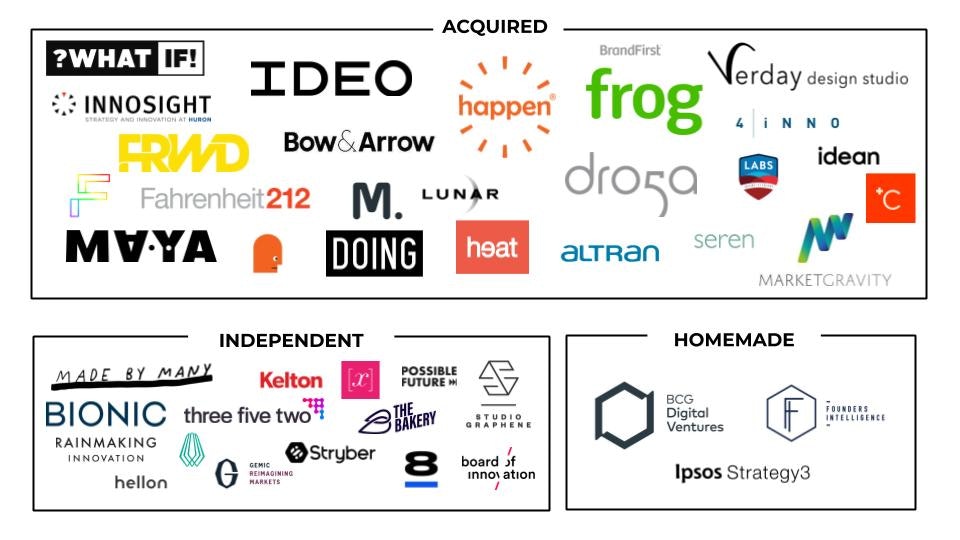According to a recent FT article, the speed and depth of COVID into a companies P&L has been so cataclysmic, that 20% of all European companies will exhaust all of their working capital, severely hampering their ability to contribute back to renewed growth.
It is having an impact on corporate innovation teams. When we interviewed 300+ C-suite executives for our recent white paper, an overwhelming majority said they were cutting innovation budgets. They also said lack of funding was stopping effective innovation inside the business.
But there is a way of keeping innovation going — even with these limited budgets. The answer lies in the growing gig economy. Increasingly, this is not just about delivery drivers and taxis, but people who are offering professional skills.
If companies can harness the trend to create a marketplace for talent, they can run innovation projects even in more straightened times.
Being able to access a talent pool at a faster, more cost-effective way than recruiting employees, can help drive faster innovation. It enables companies to go from only being able to run 3-4 experiments to running 30-40, building diverse teams across the world at speed and overcome many of the normal internal challenges when trying to release employees onto these ventures.
There are a number of ways companies can get started:
- Harness departing talent As we see organisations making significant cuts to their workforce, how can innovation teams help build a startup outskilling pathway, that provides those who are leaving that want to build their own startup the ability to access existing IP or challenge areas and offer support and a potential chance for future investment or partnership opportunities?A great example of this in action is Nokia. Nine years ago, Nokia cut over 45% of its jobs. It formed ‘Bridge,’ an entrepreneurial stream for employees that had an idea for a startup. Since its inception, Bridge has helped over 1000 start-ups get their beginning. Out of the companies started, nearly 20% entered into commercial agreements with Nokia as they were solving key challenges facing the business and actually helped accelerate their innovation.
- Use your alumni network Using talent that already knows the organisation can help bypass some of the difficulties that startup partners can have with corporate bureaucracy. Former employees can bring some of the new skills they have acquired since leaving the company to solve some of the challenges they already understand well.
- Create a new marketplace The existing freelance platforms out there don't cater for this skillset, therefore there is an opportunity to create one that helps access a global talent base that enables innovation to occur at an unprecedented scale for the organisation and respond rapidly to shifting demands by market.EY started this thinking back in 2015. Jeff Wong, Global Chief Innovation Officer at EY recognised on-demand workers as “a lever we could pull five years ago” to “a key part of our strategy.” In 2017 his team established GigNow, a platform used internally to find contract talent. It’s now live in 35 countries, with 36,000 workers registered. In his words: “there are all these projects around the world that we couldn’t take on before, but we can now — because now we have a talent base.”
However, to be clear in pursuing this type of strategy, there are some critical things to consider:
- A new business model is required. A day rate/project fee is not a sustainable approach, it doesn’t create the attract the right type of talent needed for this to be successful, companies will need to become comfortable with equity models and potential co-investment.
- The core innovation team moves from doing to managing. This is a significant shift, this approach means that for it to be successful, the core team needs to manage the teams and the portfolio and not be the ones creating the ventures. It will require a different skillset for the core team.
- It’s not a binary choice, the reality is there are some markets that make this approach a lot easier to execute in, others where this could be a long term vision, so innovation leaders will need to identify the markets where to pilot this.
- Training is required, to improve the chances of success you need to ensure that everyone has the foundational skillset, tools and — most critically — the mindset. If done correctly this training can help scaled more widely and build a continuing talent of pipeline from places such as universities and research institutes
The time is now to be pioneering such an approach, as companies face these times of rapid disruption, it requires businesses to quickly evolve. Pivoting models and developing new products or routes to market can be achieved faster, making innovation teams more agile and able to respond more quickly and at scale to a larger number of new business opportunities.



